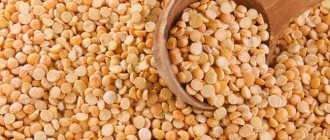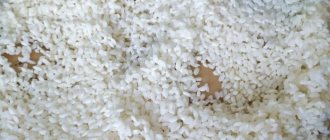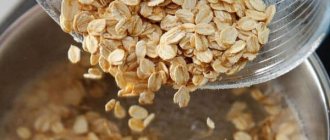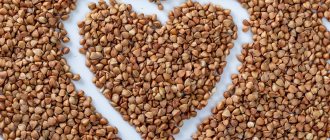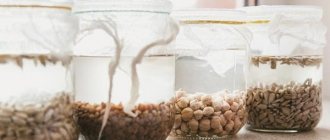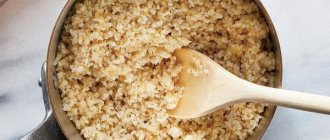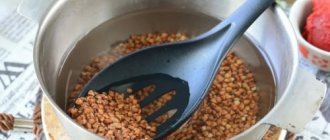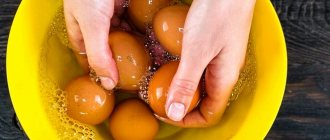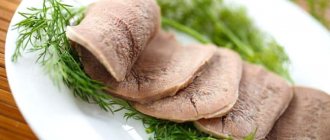(Photo: pixabay.com)
Cereals are the most popular products. They are inexpensive, very beneficial for the body, because they contain many useful substances, especially fiber. And the most popular variety is buckwheat, which many eat almost every day. But not everyone knows that this grain should be washed - in this case, the prepared dish will be even healthier.
Preparing buckwheat for cooking
To make the cereal edible and palatable, while remaining healthy, it is prepared in one of the following ways:
- They cook. At the same time, the cereal becomes tender and soft.
- Fry, and then boil, then the buckwheat will be denser and more crumbly.
- Steam in hot water. As a result, the cereal remains dense and crumbly.
- Leave overnight in kefir. In this form, the grains remain coarse, and saturation occurs quickly.
- Sprouted in water to increase usefulness.
Regardless of the cooking method, it is recommended to wash buckwheat. The cereal will be finally cleared of dust and sand particles, small pebbles and other inedible inclusions.
Usually the manufacturer warns about the need for rinsing, but sometimes there are no preparation recommendations. This does not mean that the cereal is perfectly clean. It needs to be washed “by default”.
What does washing cereals do?
You should not refuse this procedure and consider it superfluous. This is usually done by those people who buy cereals from expensive manufacturers. However, even if you paid a decent amount for buckwheat, this does not guarantee that it will not contain garbage and low-quality grains. What’s even worse is that during storage the grains are often treated with chemicals, and they must be washed off. And if you eat a product that has been treated with chemicals, and even with admixtures of sand and garbage, then what benefits for the body can we talk about? This can only cause harm. In addition, if you accidentally bite a pebble that is sure to be found in unwashed buckwheat, there is a risk of tooth injury.
Where does the garbage come from in buckwheat?
The quality of buckwheat is determined by GOST R 55290-2012. According to the standard, cereals are sold in the form of steamed or unsteamed buckwheat kernels (whole grains) and podel (cracked buckwheat kernels). The product is valued for its absence of pesticides and genetic modification, but the kernels require additional purification.
According to established standards, finished packaged cereals may contain:
- Broken kernels, flour. These are small particles that do not pass through the woven sieve No. 08 (8 holes per 1 cm2). Such impurities will not harm your health, but with them the finished porridge will be viscous.
- Grains in a fruit shell. They remain hard for a long time and spoil the consistency of the dish.
- Particles of sand, ore, small earth lumps, slag.
- Litter of organic origin: buckwheat husks, particles of cereal stems and other nearby plants.
- Poor quality kernels. This includes rotten, moldy seeds in the package.
We recommend: How to get rid of old books so they aren’t lying around the house and still make money
All cereals, especially loose cereals, must be carefully inspected. It may contain black grains of a weed plant - hop ford. They must be removed manually.
Even cereals intended for baby food may contain the listed types of contaminants. Exceptions are admixtures of third-party and spoiled grains.
In premium buckwheat, the permissible value of impurities is 0.3%; There are 3 varieties in the cereal - 2 times more. To eliminate them, buckwheat must be thoroughly washed.
Recipes for barley porridge with milk
How long to cook buckwheat in water and milk
There are a large number of recipes for preparing this dish in combination with various ingredients.
A simple recipe for porridge with milk
How to cook barley porridge with milk? It's very easy to do, you just need to follow the simple step-by-step instructions. To prepare this dish you will need the following ingredients:
- glass of egg;
- a couple of glasses of water and milk;
- spoon (tablespoon) of sugar;
- butter (30 gr.);
- a pinch of salt.
The grains are carefully sorted and then rinsed several times. Then add water and gradually bring to a boil over medium heat. After boiling, cook over low heat, waiting until the water has completely boiled away. When this happens, milk is poured into the cereal, after which everything is carefully and thoroughly mixed.
Simmer the porridge over low heat for a quarter of an hour, stirring occasionally. Add salt and sugar to taste. After cooking is complete, remove the pan from the heat and leave to “ripen.” Before serving, add a small piece of butter. Sugar and butter can also be added directly to the plate before serving.
Milk barley porridge with fruits
This recipe for barley porridge with milk allows you to prepare a delicious, highly nutritious dish that is useful to eat before an exhausting sports workout or an active work day.
To prepare it you will need the following ingredients:
- cell - one glass;
- milk – two hundred milligrams;
- water - a couple of glasses;
- several apples;
- half a glass of chopped and dried walnuts;
- 30 gr. butter;
- sugar, cinnamon, salt - to taste.
The cooking time for this dish is about 40 minutes. One hundred grams of it contain 135 kilocalories.
- Cook the porridge in water - pour the washed cereals with water, gradually bring to a boil, and after boiling, boil over very low heat for 20 minutes.
- The apples are washed, peeled, and carefully cut into cubes.
- The butter is melted in a frying pan and apples are fried in it, to which nuts, cinnamon and sugar are added.
- Add milk and cook for another 10 minutes, after which add nuts and apples in butter.
Barley porridge in a slow cooker
This dish is best prepared when cooked in a slow cooker. It may burn on the stove, whereas this does not happen when cooking in a slow cooker. Yachka cooked in a slow cooker turns out much more tasty and fluffy than on the stove.
How to properly prepare such a dish? To do this you will need:
- half a glass of egg;
- 200 ml each of water and milk;
- 1 spoon (tablespoon) of oil;
- to taste - sugar, salt;
- dried apricots or raisins - optional.
The washed cell should be poured into the multicooker bowl, and sugar, salt, and butter should be added there. Pour water and milk into the bowl. Mix everything. If desired, you can add dried fruits. Having set the appropriate program on the multicooker, wait for the dish to cook. This process usually takes a little over half an hour. After finishing the cooking process, you can immediately start eating.
Barley porridge with chicken and milk in a slow cooker
This inexpensive, healthy dish with rich flavor is a great breakfast option. To prepare it, you need to take the following products in the required proportions:
- glass of egg;
- a couple of glasses of milk;
- 350 gr. chicken fillet;
- 50 ml sunflower oil;
- onion head;
- a couple of carrots;
- salt to taste.
Peel the carrots, chop finely or grate. Peel the onion and cut into small cubes. Pour oil into the multicooker, place prepared vegetables in it and turn on the “frying” mode. After this, add finely chopped and well-washed chicken fillet to the bowl and cook for another 10 minutes with the lid open. Then add a cell that has been washed in advance with cold water. All this is peppered, salted, poured with milk and cooked in the “grains” mode. After the cooking process is completed, the dish is immediately served to the table and eaten hot. It turns out to be very satisfying, tasty, and healthy for the body.
How to properly wash buckwheat?
To prevent organic and mineral debris from getting into your porridge, you must:
- Sort through the grains. Select uncleaned kernels and large foreign inclusions. It is most convenient to visually inspect the product in a deep, large-diameter container, distributing the grain along the bottom.
- Start rinsing by directing a stream of water into the container. When small particles float to the surface, drain the water. Then rinse the buckwheat again. Repeat the process until the water becomes clear. To ensure that no impurities remain at the bottom, during the washing process you should stir the cereal with smooth circular movements.
- To eliminate flour, you can wash the buckwheat in a fine sieve.
You should not thoroughly grind the kernels, otherwise they will be damaged and the porridge will not be crumbly.
Helpful advice
- To make the buckwheat crumbly, the finished porridge is loosened with a fork.
- If a crust appears on the bottom and walls of the cauldron after heating in the oven, then it is left in the bowl, first broken into small pieces, and poured with hot water or broth.
- The liquid should be twice as much as the cereal.
- Place on fire, cover with a lid and heat until swelling.
- After this, the cereal is mixed with the rest of the buckwheat.
Before serving, the finished porridge is placed on a plate and poured with melted butter or used as a side dish for meat dishes.
If buckwheat is served with milk, then hot porridge is poured with hot milk, and cold porridge is poured with cooled milk.
Do I need to wash buckwheat before frying?
Calcined buckwheat, which is brown in color, does not need to be fried. All you have to do is wash it and start cooking. Green kernels, which are considered the most useful, are subjected to additional heat treatment.
When fried, the cereal acquires a pleasant aroma. If you wash it the day before, the moisture level of buckwheat will increase, calcination will partially turn into cooking, after which the grains will become semi-ready. For this reason, housewives prefer to do without washing at all, and then the impurities remain in the porridge.
To cook green buckwheat correctly, you need:
- Fry the cereal in a dry frying pan for 4-5 minutes. Readiness is determined by the appearance of a golden hue.
- Pass the cereal through a fine sieve.
- Rinse the product, add clean water and cook until tender.
We recommend: Does a bath help with coronavirus, what happens to the virus in a steam room?
You can fry buckwheat for future use. Ready golden kernels are stored in a dry, dark place and washed immediately before cooking.
Why is phytic acid dangerous and how to get rid of it?
Phytic acid not only worsens the taste of porridge, but also blocks the work of digestive enzymes, is not processed by the body, and impairs the absorption of nutrients in the stomach - magnesium, calcium, zinc, protein and fats.
Ultimately, consuming cereals with phytin can lead to a deficiency of minerals and other substances needed by the body. For example, a lack of calcium can cause osteoporosis and rickets (in children under 2-3 years of age).
In addition, phytic acid is a storehouse of phosphorus, and has been recognized by WHO as a cause of allergies and anemia, as well as sensitivity of the body to certain foods.
The positive side is that phytin is easily washed off from the grains under running water. To be on the safe side, it’s a good idea to soak the grains for several hours. The researchers note that when buckwheat, like other grains, is soaked and sprouted, an enzyme called phytase is released, which breaks down phytic acid.
How to wash green buckwheat before sprouting?
Buckwheat with small sprouts is considered the most useful. It contains 76 times more antioxidants than rice. “Live” cereal increases hemoglobin and normalizes the functioning of the nervous system. It should be prepared like this:
- Rinse green buckwheat thoroughly and remove any floating particles;
- Spread the cereal in a 2-centimeter layer, cover with clean water for 3 hours;
- place the cereal in a sieve and rinse under strong running water;
- pour into a container for germination, cover with several layers of damp gauze and cover with a lid, ensuring air access;
- put the buckwheat in a warm place (18–24 ◦C) for 12–24 hours.
The appearance of small sprouts means that the cereal is ready to eat. It can be eaten as a side dish or added to a salad.
Regardless of the cooking method and the quality of the grain, buckwheat needs to be washed. This will make it better, tastier, and the risks of foreign impurities entering the body will be completely eliminated.
What grains need to be washed before cooking?
To prepare rich and tasty porridge, almost all cereals, except for a few types, must be washed before cooking. It makes sense to rinse hard grains with water. Although modern technologies for packaging products comply with hygienic standards, it is better to play it safe.
Washing the grains is necessary to wash out:
- dust;
- foreign impurities;
- husks.
After cooking, the dish will look aesthetically pleasing, and this is an important point.
Need to wash before cooking:
- rice;
- buckwheat;
- millet;
- barley;
- all legumes (beans, peas, lentils, chickpeas, mung beans, etc.).
Rice, pearl barley and millet need to be rinsed in several waters.
Possible harm and contraindications
Any diet is stressful for the body. It can manifest itself in the form of headache, weakness, drowsiness, and decreased performance. In this case, stop the diet or introduce glucose into the diet: drink water with honey, eat a few fruits.
Buckwheat contains rutin, which helps thin the blood.
Therefore, people taking pharmaceutical preparations based on rutin should use the buckwheat mono-diet with great caution. It’s better to consult a doctor about the advisability of such cleansing and dosage of medications.
Cleansing the body with buckwheat is strictly contraindicated for:
- diseases of the gastrointestinal tract in the acute stage;
- infectious diseases;
- diabetes mellitus;
- pregnancy, breastfeeding.
